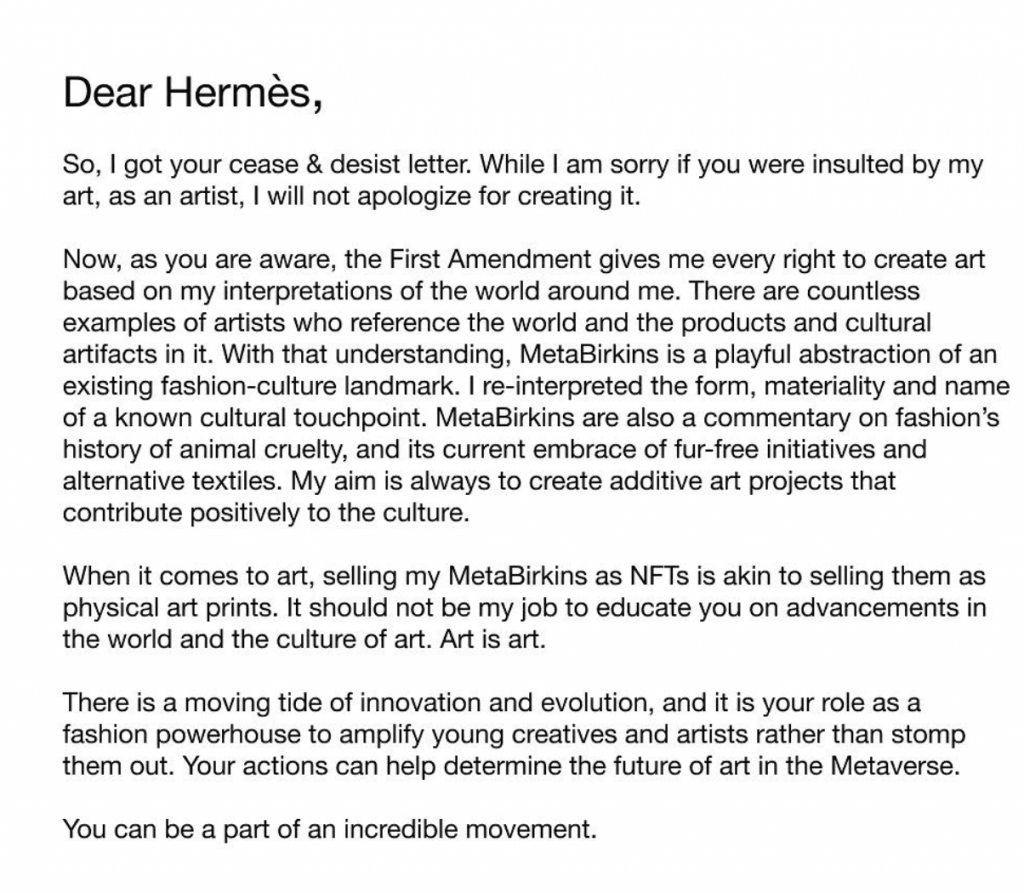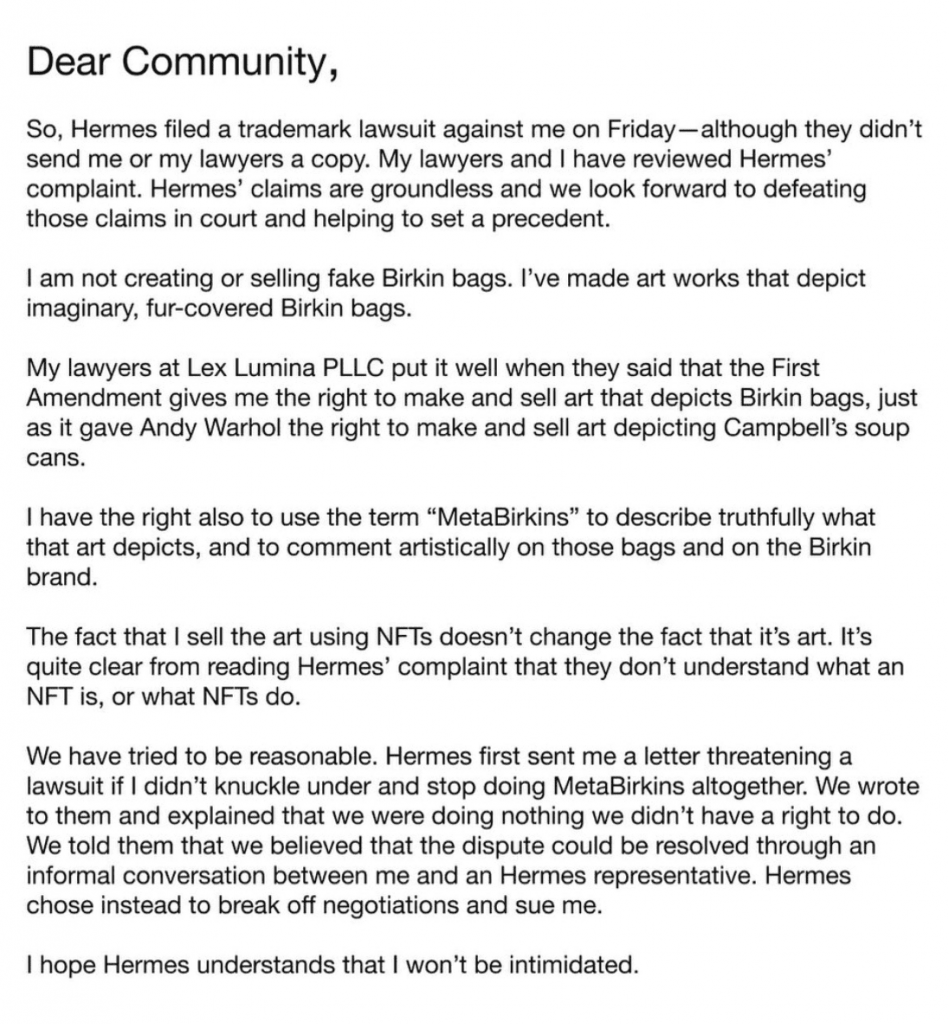The cross-over no one was expecting.
Let’s start with some context, the NFT collection titled “MetaBirkin” was launched in 2021, the art depicted purses covered in fur with different designs, inspired by the famous Hermès Birkin’s . The collection got attention very quickly and was featured in some of the most important fashion media outlets. The series is inspired by “the acceleration of fashion’s fur free initiatives and the embrace of new textiles” according to the artist Mason Rothschild .
By January 2022 the project reached 1M in sales, that certainly got Hermès attention and they sent the first cease & desist letter, which Mason addressed publicly on the MetaBirkin instagram. His main argument against Hermès was that his work is protected by the First Amendment.

Hermès sued Rothschild for a copyright infringement.
On February 8th it was announced that Hermès won the battle even with all the arguments Rothschild’s team made to protect the artist. Hermès got 133K for the damages, which is less than what Rothschild collected from his sales (125k according to Forbes)

This lawsuit opened up a huge conversation, starting with being the first of its kind. The first time a court had to analyze wether costumers could be confused by this artwork, thinking Hermès is involved and buying because of that. Wether the sales were a direct reflection of Hermès’ strong branding. And most importantly if the MetaBirkins could be protected by the First Amendment for being an artistic expression…….
So does this ruling means NFTs aren’t considered art? Not quite.
This case focused on 3 statements:
1.- Intellectual property / copyright infringement – This is the base of the case, Hermès claims that Rothschild committed “Creative Appropriation” , saying he didn’t create anything therefore it can’t be protected as an artistic expression. But this brings us to a very interesting comparison: Andy Warhol painting Campbell soup cans, how are they different?
2.- Hermès couldn’t get into the NFT market thanks to this project – The brand claims that if this project keeps growing, it would block a huge market opportunity for them, and they are kind of right. A lot of big brands like Gucci and Dolce Gabbana have launched NFTs making millions of dollars, so in a sense this project could confuse people if Hermès decided to join the MetaVerse. But as Rothschild said , this could’ve been a great collab opportunity for Hermès.
3.- Is this art or just a fake Birkin – This was the toughest decision for the jury in my opinion because it could be both or neither. Hermès claimed this fell in the same category as a fake purse, and if that is the case, why aren’t they bringing to court every seller of fake Hermès bags?
One of the biggest criticisms they received was that a multi-billion dollar empire is chasing after a small artist creating art inspired by purses, that only exist in a digital world. Valid, but at the same time Rothschild used as inspiration and as a base for his art an already existing “canvas” that can be considered art on its own right, the Birkin is one of the most sought after bags, an icon at this point. Lastly, the NFT’s had many other artistic references in their designs, like the infamous Mona Lisa, Basquiat, Murakami, Van Gogh, so where does inspiration reach a limit?

Why is this important?
This case is the first to analyze the interaction of trademarks in the Metaverse. This is the signature lawsuit of the NFT world , setting a precedent for artists and lawyers everywhere. As the NY Times said “it’s a great day for big brands and a terrible day for artists and the First Amendment” .
It all comes down to, what side are you on?



